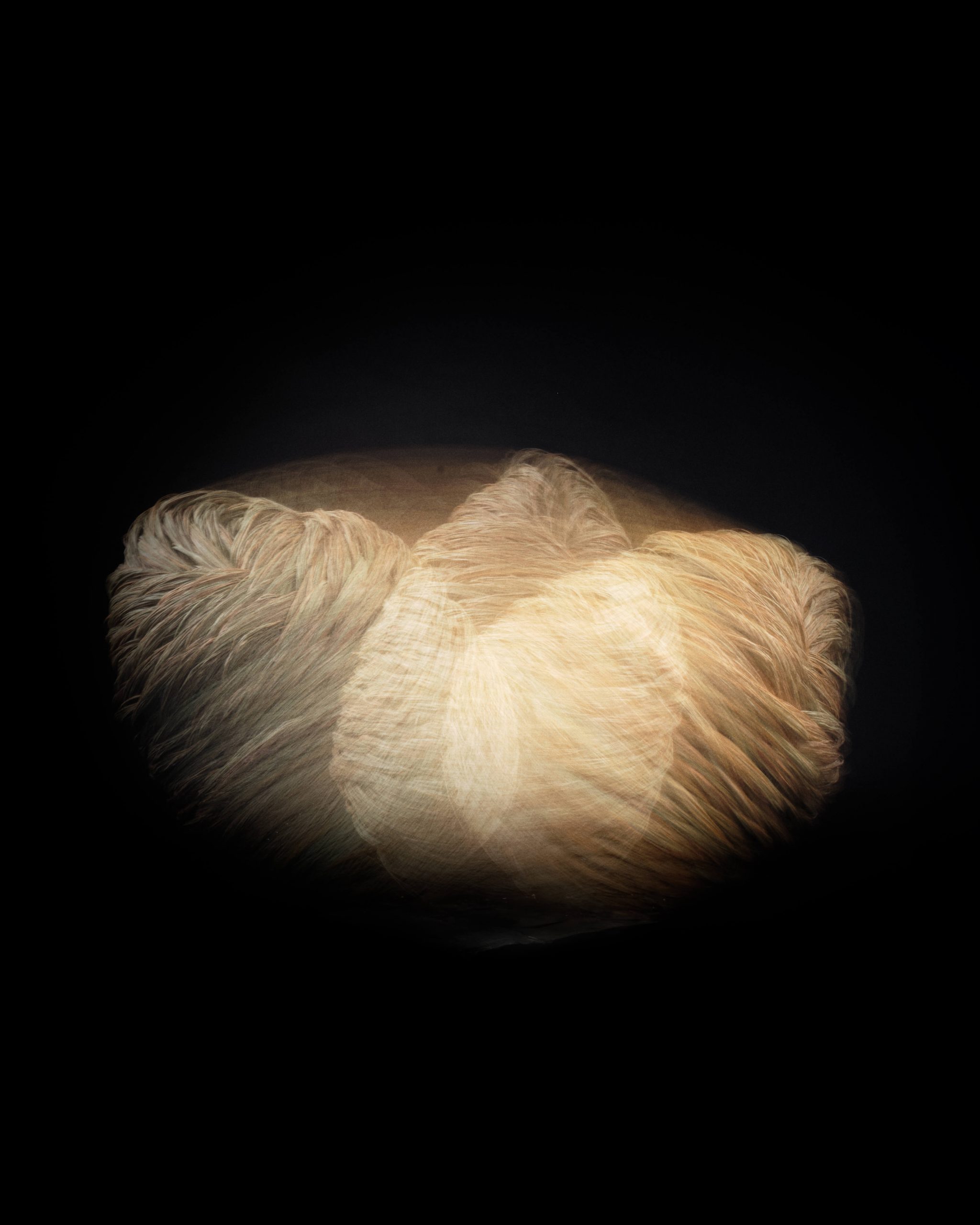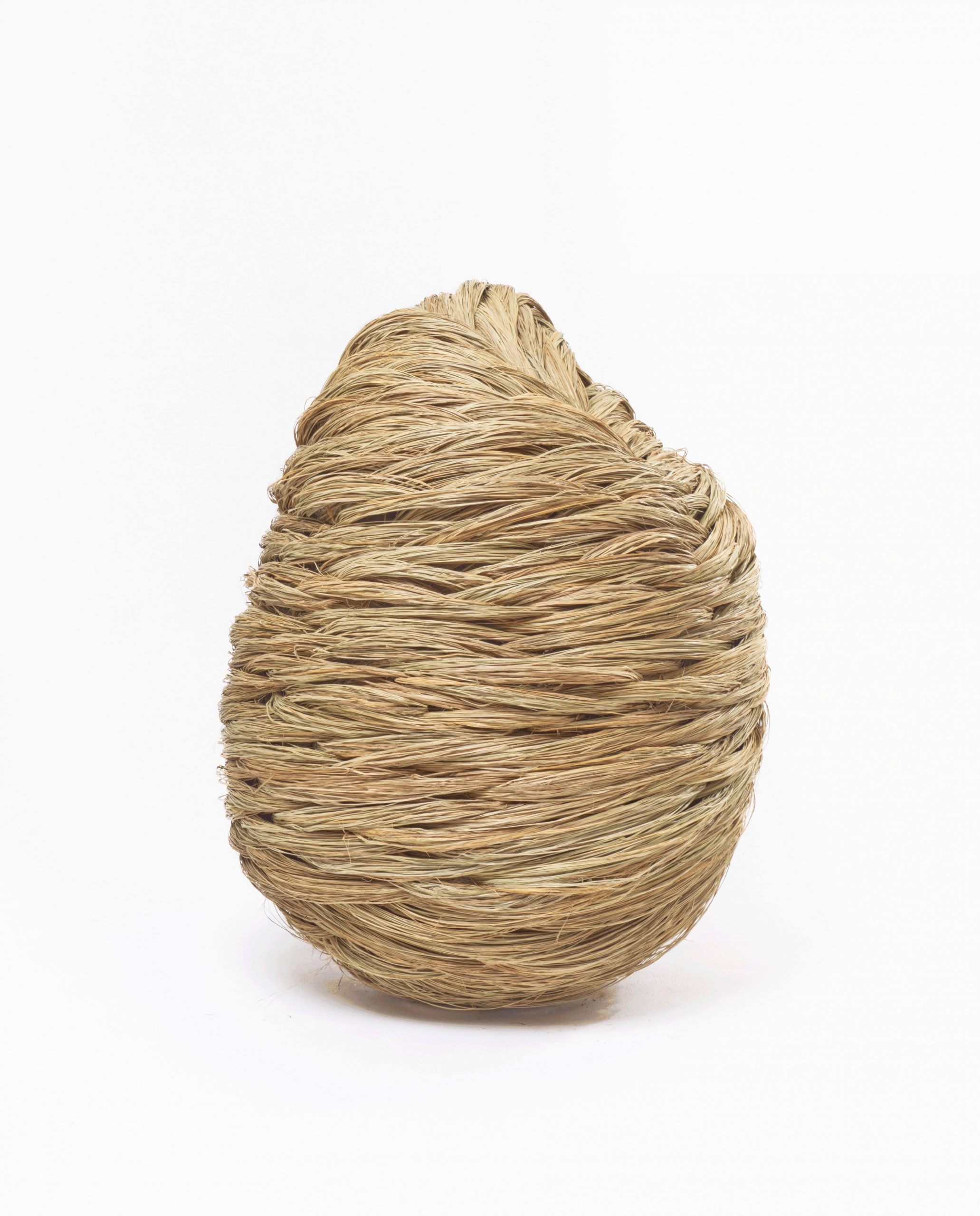tenten


tenten
ESP
Esparto, yeso y hierro
90 x 55 x 65 cm
Seleccionado en Madrid Design Festival 2025
2024
“Hecho por las manos,
el objeto artesanal está hecho para las manos:
no sólo lo podemos ver,
sino que lo podemos palpar.
A la obra de arte la vemos pero no la tocamos.”
—Octavio Paz
Tenten es un obra vegetal realizada por manos humanas, o un juguete tamaño adulto. Es un “juego” en sí mismo de identidad, que busca crear tensión, interpelación en torno a la corporeidad del arte, su posible funcionalidad y el límite arte-artesanía.
El punto de partida de Tenten se origina en el hecho de que las plantas de esparto que no son arrancadas cada año, para su posterior uso en la artesanía, terminan echándose a perder y muriendo. La artista lee este dato para congelar en su obra un vínculo de intercambio entre especies que va y viene entre mundo vegetal y mundo humano. El esparto se inserta en la vida en un nuevo ciclo de vida a través de la artesanía, y el ser humano/artesano deja su huella en la obra producida a través de la modificación y creación de ella.
La artista anima al espectador a actuar sobre la obra. Al empujarlo, tocarlo…vuelve siempre a su posición inicial, a las manos del “jugador adulto”, que imprime así su eslabón en el vínculo interespecie vegetal – ser humano en un loop en equilibrio.
Fotografía Marko Barrier
ENG
Esparto-grass, plaster, and iron
90 x 55 x 65 cm
Selected for Madrid Design Festival 2025
2024
“Made by hands,
the handcrafted object is made for hands:
not only can we see it,
we can touch it.
A work of art we see, but do not touch.”
—Octavio Paz
Tenten is a vegetal piece made by human hands—or perhaps a toy, adult-sized. It is a “game” of identity, playing with tension and reflection around the corporeality of art, its potential functionality, and the blurred boundaries between art and craft.
The starting point for Tenten lies in a simple fact: esparto plants that are not harvested annually for artisanal use eventually wither and die. The artist reads this data as a metaphor and crystallizes in the work a cycle of exchange between species, one that flows between the vegetal world and the human world. Esparto enters a new life cycle through craft, while the human/artisan leaves a trace on the object through its shaping and creation.
The artist invites the viewer to interact physically with the work. When pushed or touched, it always returns to its original position—back to the hands of the “adult player,” imprinting their link in this interspecies loop between plant and human, held in delicate balance.
Photography Marko Barrier